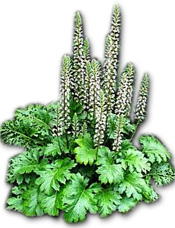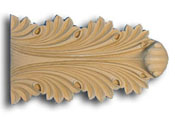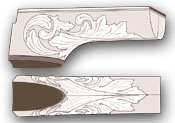Anyone who thinks seriously about decorating their banjos in the late 19th and early 20th century style will eventually want to carve their banjo heels. Of all the caving patterns available for study, the Whyte Laydie pattern stands out for its excellence. This article is an examination of the aesthetics of that carving pattern and attempts to put it somewhat in its historical context.
Note: all of the drawings for this article were made based on photos from a banjo in the collection of Ed Britt.









